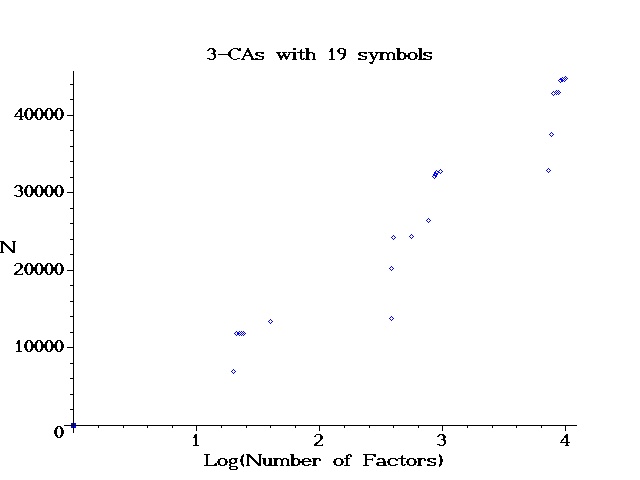| k | N | Source |
| 20 | 6859 | orthogonal array |
| 21 | 11791 | orthogonal array fuse fuse fuse fuse postop NCK |
| 22 | 11823 | orthogonal array fuse fuse fuse fuse postop NCK |
| 23 | 11847 | orthogonal array fuse fuse fuse fuse postop NCK |
| 24 | 11869 | orthogonal array fuse fuse fuse fuse postop NCK |
| 40 | 13357 | Chateauneuf-Kreher doubling |
| 381 | 13717 | Raaphorst-Moura-Stevens |
| 382 | 20215 | Add a factor |
| 400 | 24158 | Cohen-Colbourn-Ling |
| 553 | 24325 | Raaphorst-Moura-Stevens fuse fuse fuse fuse |
| 762 | 26371 | Chateauneuf-Kreher doubling |
| 855 | 32095 | Colbourn-Martirosyan-Trung-Walker |
| 874 | 32329 | Colbourn-Martirosyan-Trung-Walker |
| 893 | 32563 | Colbourn-Martirosyan-Trung-Walker |
| 950 | 32779 | Colbourn-Martirosyan-Trung-Walker |
| 7239 | 32869 | Colbourn-Martirosyan-Trung-Walker |
| 7620 | 37496 | Cohen-Colbourn-Ling |
| 7942 | 42748 | Cohen-Colbourn-Ling |
| 8303 | 42880 | Cohen-Colbourn-Ling |
| 8664 | 42902 | Cohen-Colbourn-Ling |
| 9025 | 44462 | Cohen-Colbourn-Ling |
| 9386 | 44534 | Cohen-Colbourn-Ling |
| 9747 | 44642 | Cohen-Colbourn-Ling |
| 10000 | 44714 | Cohen-Colbourn-Ling |
